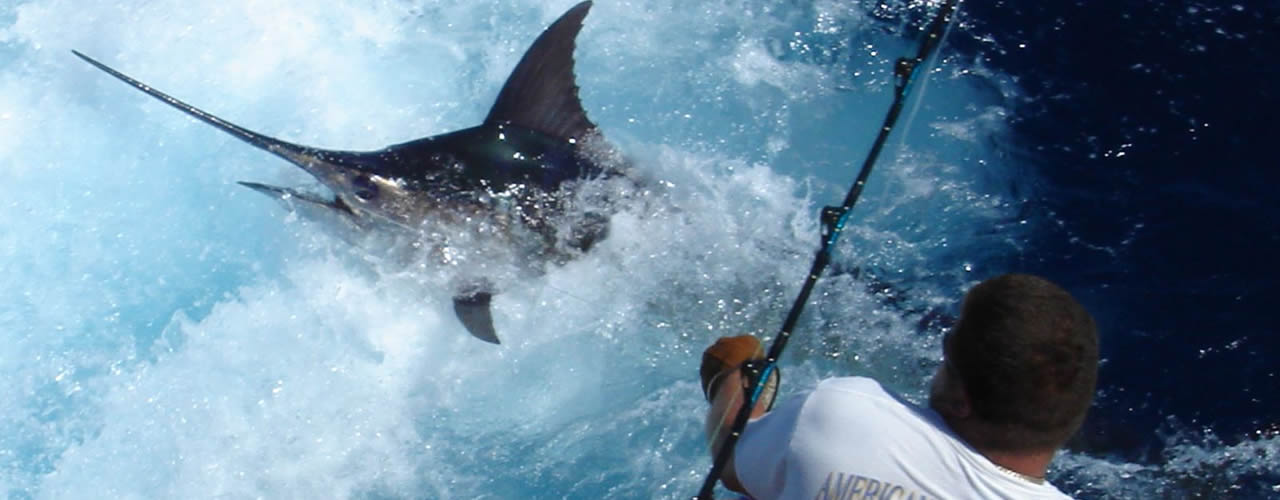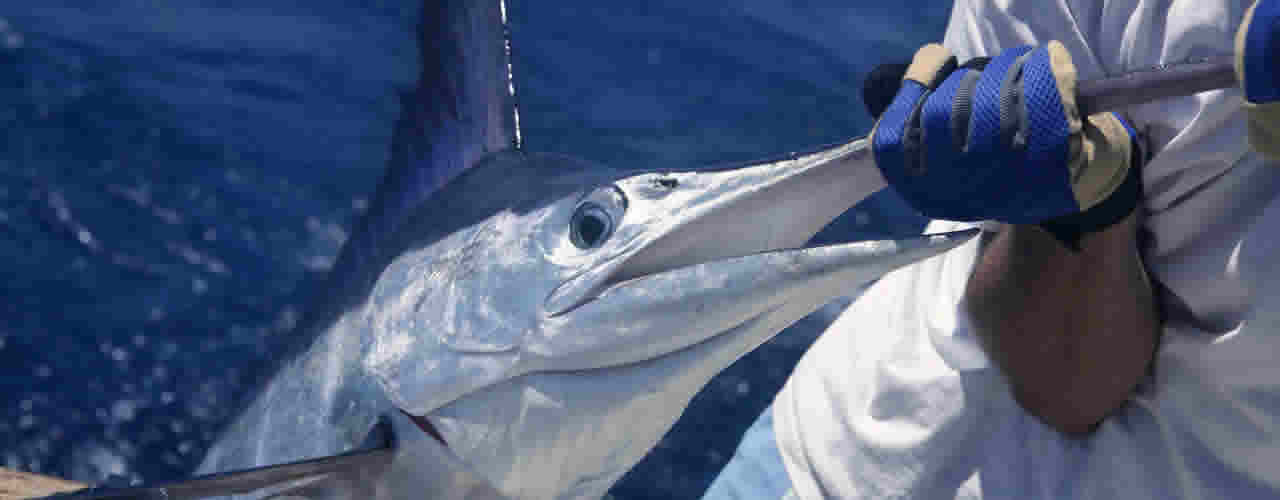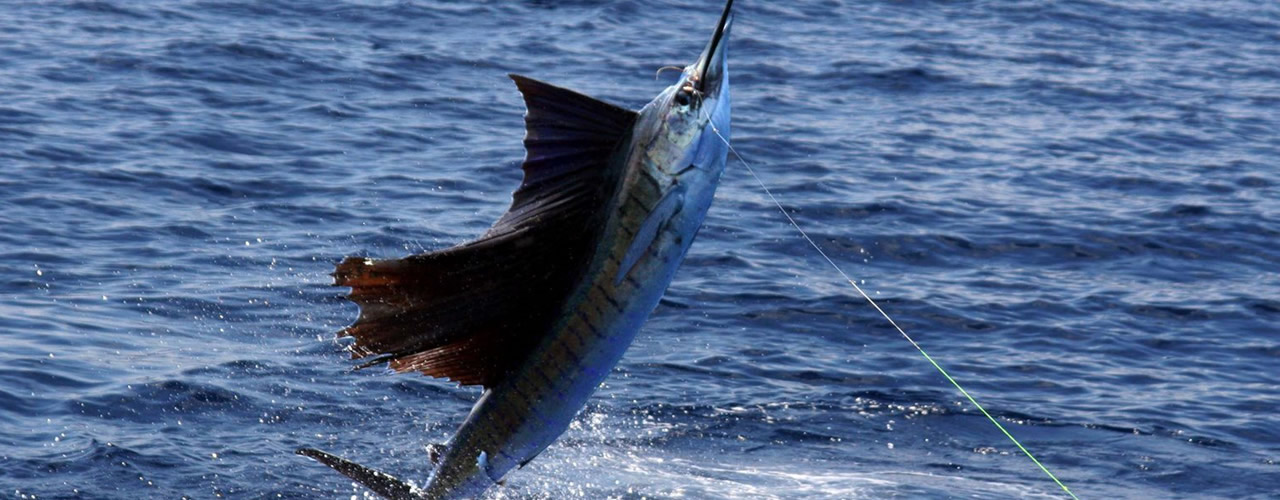58 Tournament Fishing Club in Puerto Vallarta
Does Marlin sees in colors?
At first time the answer to this question may be based on scientfic test and supported by empirical evidence. There area biologists who affitm that billfishes not only can see all the colors, but also prefer lures with bog eyes instead of those cheap ones with stickers. Some others scientists say that they probably can´t see colors but some hues or shadows; others say marlin follow the sound made by the baits.
What does empirical evidence say?
In a lot of places, the bait used to fish blue marlin is lland blue white, -also known in fishing world as "Hawaiian eye" -mixed with a ballyhoo. Although the long baits, as squids, are very succesfull too. Jim McKeral, owen of Carolina Lures and maker of skirted lures of high quality said once: "We have two colors here in the Carolinas: blue/white and white/blue"... McKeral said that like a joke, but it´s not. Any other color of bait has such success as the combination of blue and white. Then... blue marlin can or cannot to see color?
Another point to consider is the fact that in some conditions and others oceans, different combinations can work better. The skirt pink/purple is the best when presented with a squid, and the yellow/green is better with a mackerel which is used when marlin are following schools of little golden (the tone of the skirts are similar to the ones of golden´s skin), which means a big contrast between blue/white llander used at East U.S. coast and the Caribbean.
In the other hand there is also the big marlin of African coasts. There is no evidence of any kind of pattern of color in the area, but have been good carches with almost every color of lures, maybe a little bit of more luck with pink/white.
Kona kolors
The Origin of lures for billfishes is in the town called Kona in Hawaii, Kona is the land of the most expensive lures in the world with lots of removable and interchangeable skirts, also with heads of any form you can know.
A lot of fishermen in Kona are convinced that then color is the difference. They are pretty sure that most marlins react to the color, a kind of relation with what they are looking for food in the momento.
If you see a lot of little squids in the area, better choose a blue or purple lure, because that's the color of squids when in the water. If there are some Atlantic bonitos then use a combination of purple and silver. That's not their natural color, but if you see them underwater they look like those tones.
If you're fishing in a rainy and cloudy day yoy may want to use lures with brilliant pink colors. A lot of fishermen had practiced that during years and have had very good results.
The blue ones from Los Cabos
Fishermen from Cabos San Lucas say that the best color to get blue marlin depends on the hour of the day and the angle of sun. In the morning the darks baits are good, but while the day passes by, the yellow and orange ones are better. During twilight the red ones had a better performance and generally are the best option, especially with full moon.
Conclusions
No one can say scientifically speaking that marlins can see colors and that those can really make a diference, but there are enought evidences, thansk to the constant practice, to prove that colors in lures have a mission and the results are during the fishing time. Anyway, if a fisherman tryly believes that the color doesn´t matter, would fish with the same color bait all day, every day and that... has never seen before.



